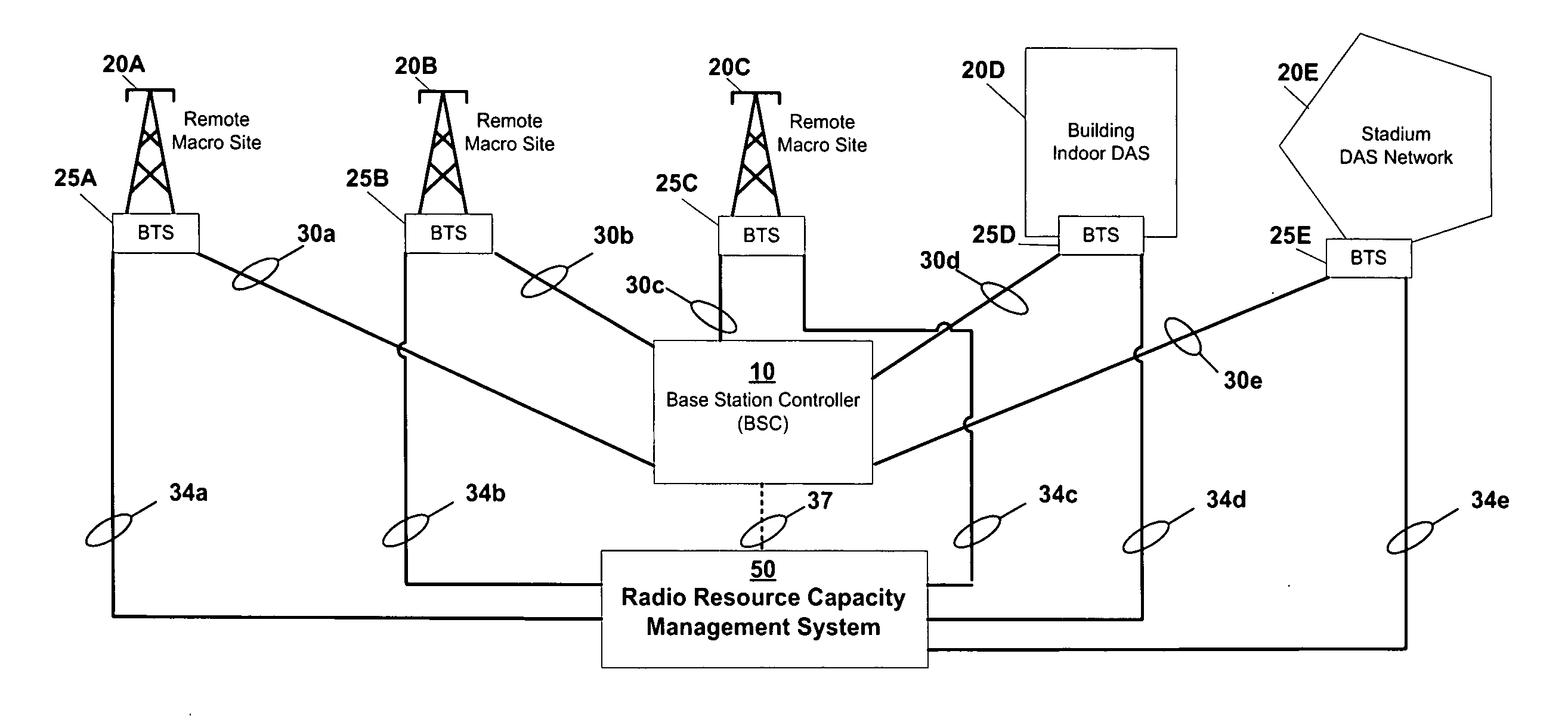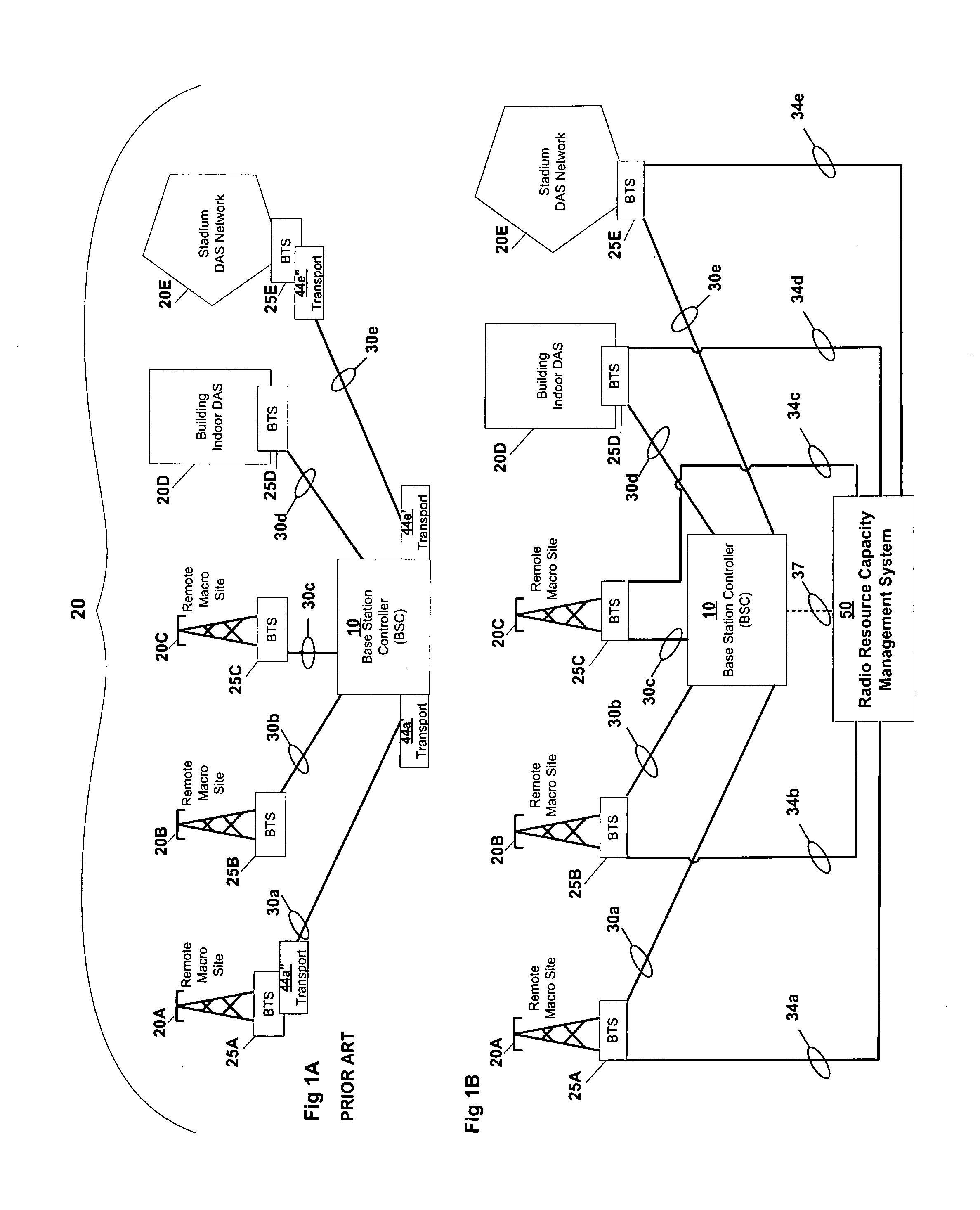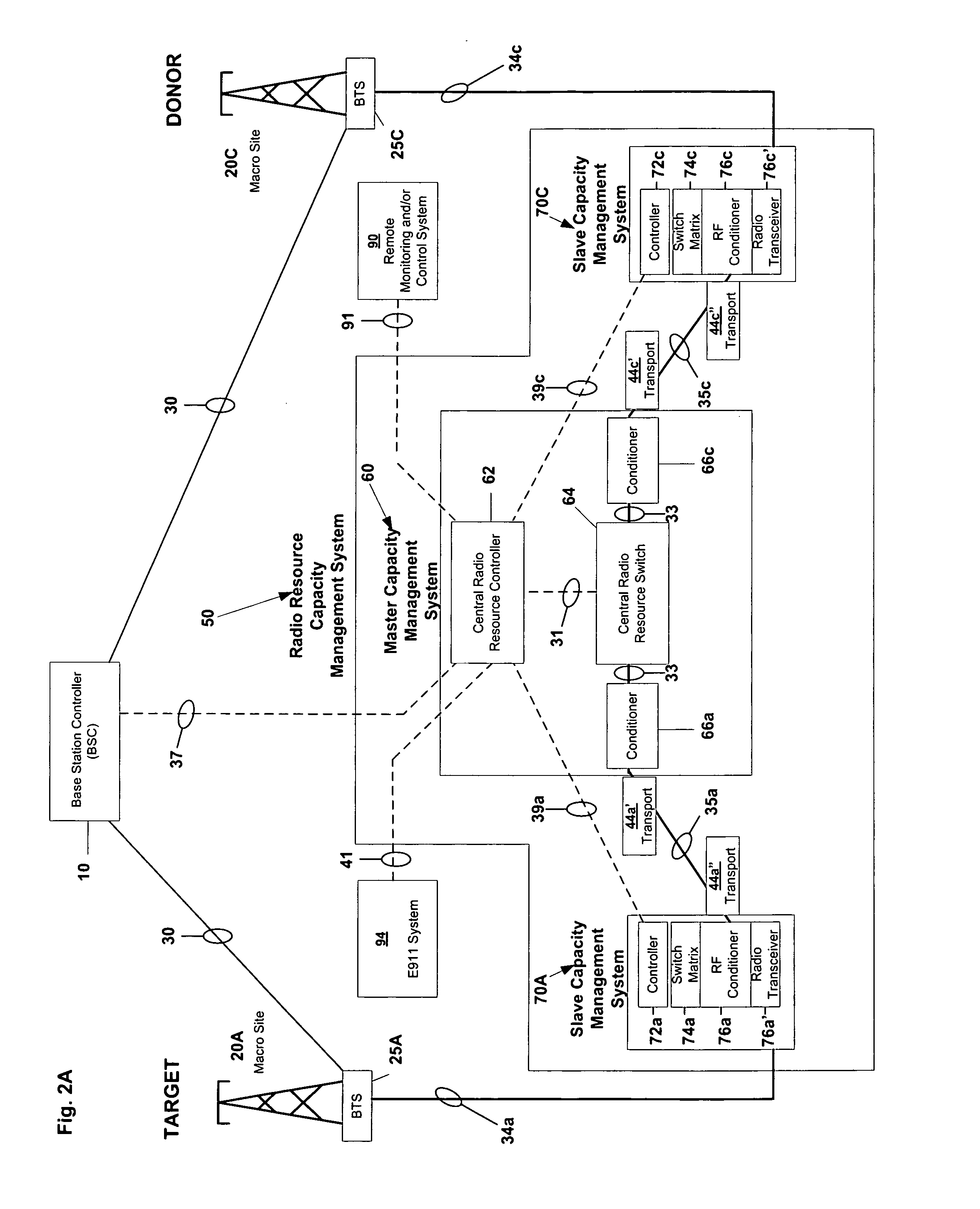However, the cost of the redundant radio
transceiver hardware is extremely expensive, as are the costs of maintaining the transceiver hardware.
One reason is that many cities and municipalities now regulate the height and location of the towers, making their installation an impossibility in some service areas.
Although the antenna systems and their utilizations have effectively extended the coverage areas of a BTS, the BTS itself only has a fixed amount of
usable RF radio
channel resource capacity.
As it currently stands, that capacity cannot be transferred or shared between cells to increase the capacity of a BTS associated with a cell or a DAS system.
This ideal situation presents a common issue to all service providers where, at certain locations and at certain times of the day, many more users are attempting to access the network than at other periods during the day.
A prime example is the problem of dealing with
rush hour capacity overload.
Alternatively, at non-peak hours during the day, these redundant RF radio channel resources sit idle.
Unfortunately, this idle capacity is in the form of very costly redundant radio transceiver hardware that is physically located onsite in almost all of the network base transceiver stations.
A major shortfall of this system was that it could only hold one cellular phone call per frequency channel.
Modulation format advancements in all later systems have become increasingly complex in order to get as much capacity out of the available frequency bandwidth as possible.
Furthermore, because of the deceasing use of this format, only a few manufacturers are still supplying transceiver equipment based on that technology.
As was mentioned above, the modulation schemes of each of these advancing technologies continues to become more and more complex in their attempt at providing even larger capacities and data speeds.
Furthermore, they are highly time-dependent, which requires the use of global positioning systems (hereinafter GPS) to synchronize the system's transmission times.
However, this patent failed to provide a method of actually transferring BTS capacity to another cell.
Therefore, this method does not offer a dynamic solution towards meeting capacity demand needs which are continuously changing during the course of a day or because of a special event or situation that creates an instant demand for additional capacity, such as when a very large number of cellular users are concentrated into one area because of that event or situation.
This method was not founded on fluctuating traffic considerations nor did it solve the problem of providing additional BTS radio channel transceiver capacity to address dynamic coverage demands.
Therefore, this method was only concerned with offering a level of reliability that there would be some form of temporary coverage within a cell, but it did not address a way to guarantee that all of the radio
channel capacity of the malfunctioning cell would be met by the relied-upon cell.
One shortfall of this patent was that it was designed around the
narrow band technologies of analog and possibly TDMA, which was in its early stages at that point of time.
Furthermore, the number of physical RF radio channels that can be grouped together in RF re-use plans are finite, thereby severely limiting the amount of actual transferred capacity that can be realized.
If these codes were added to the base transceiver stations which now use the most-
current technology formats without the BSC first completing the necessary code definition work, the ability of all of the affected base transceiver stations to provide a certain
quality of service would be gravely compromised since there would be a significant rise in the
signal-to-
noise thresholds in the entire RF area served by that BSC.
A rise in the
signal-to-
noise threshold would result in dropped calls, call failures and cause severe call interference.
Otherwise, greater and more serious operational problems would occur when compared to the problem of not having enough radio
channel resource capacity in a particular cell.
Since Schwartz fails to teach or even mention that certain fundamentals which are related to today's technology formats must be accounted for prior to radio channel
resource reallocation, the Schwartz methodology and hardware would not be able to transfer resources to another cell without experiencing severe system degradation.
Therefore, Schwartz offers no viable solution for capacity reallocation with the CDMA and CDMA-like technology formats that are universally being used by all major wireless service providers today.
Moreover, Schwartz also fails to address network reallocation
time delays, which is another extremely critical aspect that requires consideration with today's technologies.
It well known that a time
delay will occur when transmitting RF signals or data from one location to another, regardless of the types of backhaul connections within the
cellular network.
These timing errors usually occur when the
signal propagation delay is too long and they must be accounted for within the
cellular network in order to prevent call failures on any call handing in or handing out of the cell.
Such delays may result for a number of different reasons but the majority of the delays are caused by the number and types of signal conditioners that are utilized within the
cellular network.
When that occurs, a handoff will fail or a call
initiation will not be completed.
However, phones that are using other cell sites or sectors may be prevented from using an intended
target site resource because the cellular devices will be confused by the error in frequency.
In that case, the island cell effect would be caused by timing delays from the addition of the donor RF radio channel resources to the existing resources of the
base transceiver station that is being targeted for additional capacity since the donor
RF transmission or backhaul
retransmission signal would induce too great a
time of arrival differential for the
user device to use that added RF resource.
Although managing individual traffic channels may have been possible with the old format technologies like analog and TDMA, that same method is not possible when using current formats such as CDMA or CDMA-like technologies.
Thus, without the inclusion of those codes, there is no known way to decode the reallocated radio channel resources.
In other words, the entire RF resource would have to be switched, including the PN,
Sync, and Long codes, as well as the traffic channels, which to date, is not possible.
Therefore, those in the field who are familiar with the type of traffic resources being used today would understand that switching those resources from one BTS cell to another would never be possible using the methodologies being taught by Schwartz.
This is due to the fact that Schwartz fails to account for the signal-to-
noise threshold considerations that are related to the code additions, fails to account for inherent equipment and
RF transmission time delays prior to the reallocation of capacity resources to the target BTS, and has basic controller
traffic channel management issues.
In fact, none of the above-mentioned patents address the need to configure the network BSC with the critical Walsh code and time
delay information before making the reallocation of radio channel resources.
If not accounted for, code signal-to-
noise threshold interference issues will be introduced into the network and the network will experience a severe degradation in the
quality of service for the cell receiving the reallocated resources and that cell's neighboring cells.
 Login to View More
Login to View More  Login to View More
Login to View More 


